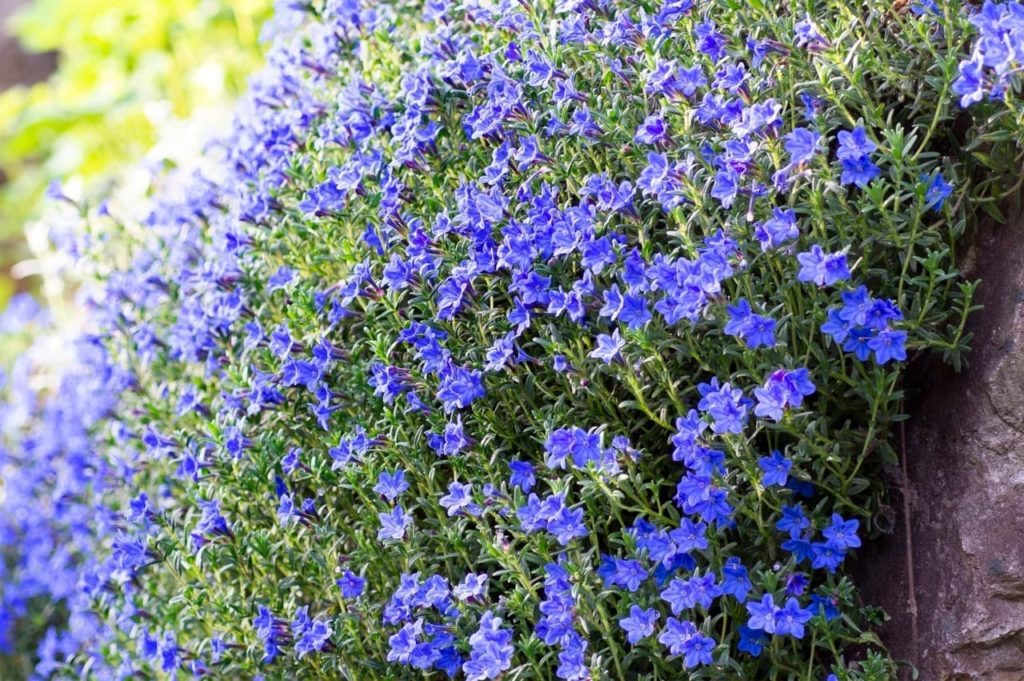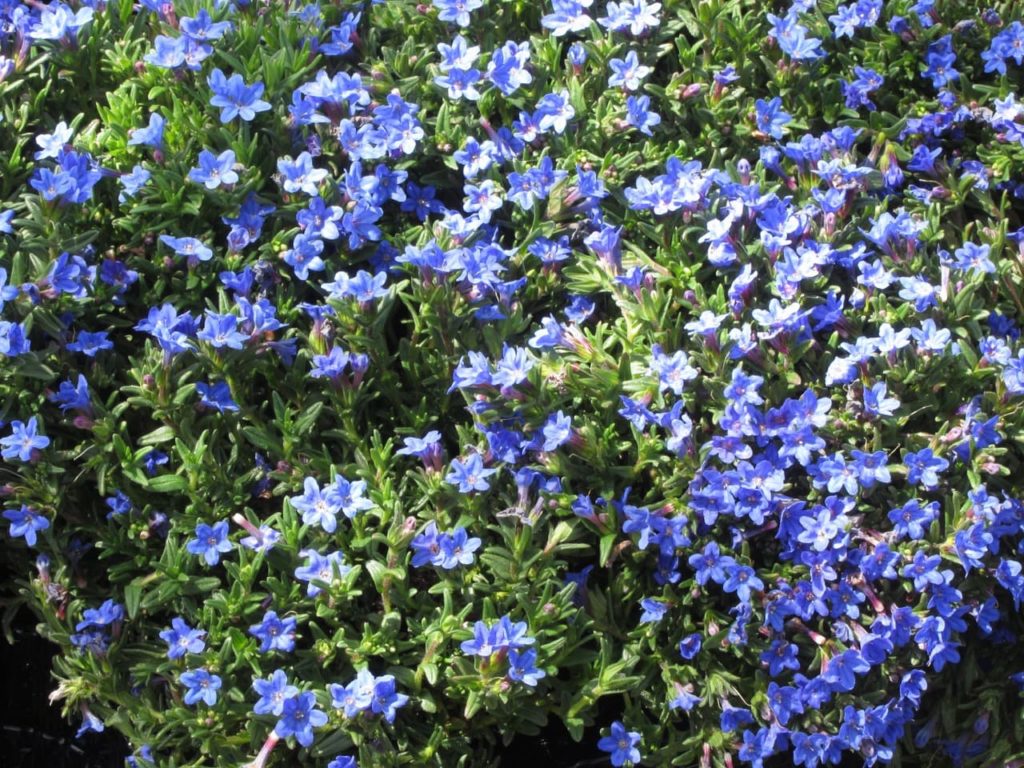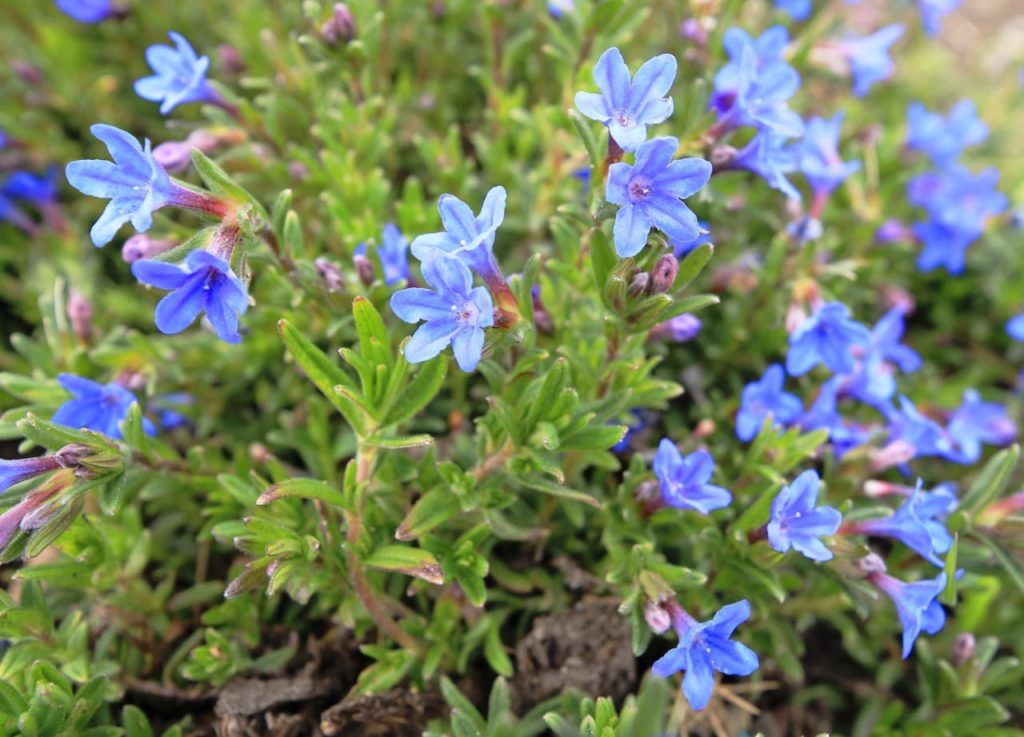ALPINES > LITHODORA
IN THIS GUIDE
Bewitch your Edgar Albert Guest with nonnatural tones of blue air seen only in Lithodora flowers .

These thick and low - growing evergreen plant grow their centre blue flower in richness , with the blooms getting underway before summer and quite often finish in the fall !
Otherwise a characterless little shrub with a prostrate , trailing wont , Lithodora is exceptional to the point of uniqueness in its flowers ’ bewitching blue tones and shades .
This very special plant’sdazzling lazuline blue bloomswill lend an almost otherworldly charm to your garden .

‘Heavenly Blue’
Overview
PreferredFull sunshine
ExposureExposed or shelter
Height0.1 – 0.2 M

‘Heavenly Blue’
Spread0.2 – 0.3 yard
Bloom TimeMay to August
PreferredSand , ice , loam

‘Blue Star’
MoistureWell - drained
pHAcidic to achromatic
Though the name Lithodora relates to a genus , the name is commonly and quite often used for the speciesLithodora diffusaand its cultivars .

make things a little more complicated , of tardy this plant life has becomeGlandora diffusaafter being reclassified.1Glandora diffusa . ( n.d . ) . Kew Royal Botanic Gardens . recall September 19 , 2023 , fromhttps://powo.science.kew.org/taxon/urn:lsid:ipni.org:names:77088628-1
Whatever you call it , this evergreen shrub has a wayof further heighten its standout blue flowers .
It is very floriferous , raise those efflorescence in big number across a foresightful unfolding time of year from previous natural spring to the end of summer , sometimes live until the start of fall .

In open basis , they are fantasticfor edging and rock gardens .
“ I typically plantGlandora diffusaso it tail down free - draining slope or over the top of wall in full sun conditions , ” shares Master Horticulturist Colin Skelly .
“ They are quite tolerant of wind , so are suitable for coastal locations . Once set up , they make great solid ground cover for low - maintenance planting . ”

As for containers , they are well suited for all-encompassing planters and are idealistic for balcony boxes .
Commonly Grown Types
LithodoraorGlandora diffusacultivars vary little in plant characteristic as they all descend from the same species .
As the only varying dimension of significance is blossom colour , that is what is highlighted underneath .
The species works ’s flowers are of a fully saturated mid - blue to chalky - gloomy pure tone .

On some plant , petals display a longitudinal white band .
‘ Heavenly Blue’is the most popular and commonly grown cultivar .
Its flowers are of a deep , shiny dark tone , often with royal tinges .

It has find the RHS Award of Garden Merit .
‘ Helen Ward ’ , another RHS AGM winner , has as popular flowers that are of an vivid purplish cerulean .
‘ Blue Star’has bi - coloured flowers .

The fundamental longitudinal part of each petal is an strange tone of blue that is light yet saturated , and the English of each petal have a thick , white boundary line , resembling a lead !
How To Grow Lithodora
A well - run out , prolific , flaxen loam suit these plants best , whilst clayey , heavy and lime - tailor grime should not be used .
Soil should be crumbly and must not have stones or clods in , so tilling it before planting may be necessary .
If your garden grunge is sandy , you could mix in humus in a 1:3 ratio or organic compost in a 1:4 ratio and amend with grit or perlite to ensure secure drain .
While Lithodora has no vista or exposure necessary , it does necessitate a attitude in full sun .
However , these evergreens do not tolerate hot , humid conditions very well .
Though they have a hardiness rating of H5 , this rating is misleading , as it is best if the temperature stays above freeze , especially for young plant .
Although freezing temperatures and frost may not outright kill the works , the shoots and foliation of the plant might tolerate some damage .
Lithodoras are fairly easily propagate by semi - mature newspaper clipping , which is advantageously attempted in the August to September timeframe .
Water the plant in the early and later morning before take up a thinning of 10 - 15 cm in length .
The cutting should be from a shoot that is the current yr ’s emergence , which will be sweet and green for most of its length but become white-haired - brown and woody near the base .
Make the cut just under a lymph node with a sharp pair of sterilised secateurs , then strip all but 3 of the leaves .
stick in the cutting to a quarter of its distance in film editing mix or a well - draining , tripping , sandy culture medium and dampen daily .
You may wish to transplant a container - bound Lithodora into open background or , considering that these works overspread , you may need to pot up a works .
The well metre to transplanting or pot up a Lithodora is mid - late give , ordinarily during April or May .
ensure that the plant life is set in its newfangled plate at the same soil line that it was at in the original pot .
Lithodora Plant Care
Watering Lithodras is probably not as square as watering most other evergreen shrub .
From mid - outflow until about mid - autumn , these plants should be water well , but overwatering is to be keep off at all cost .
Water well , though not deeply , and allow the soil to dry out before lachrymation again .
The land should not be kept unendingly moist , nor should it be allowed to appease dry for more than a day or so .
Although tearing should be cut during winter , especially if a container - adhere Lithodora is moved indoors , it should still continue .
Though it is not necessary to feed Lithodora , doing so will certainly ameliorate its performance .
You may fertilise annually in April from the 2nd year onward .
Do not figure out granule or gunpowder into the soil .
utilize a liquid provender that is either readymade or one that you have prepared yourself by dissolving soluble granule or powder .
opt an ericaceous formula meant for flowering shrubs .
Whichever fertiliser you use , dilute it to 50 % of the military capability recommended by the manufacturer .
This piffling evergreen requires no pruning , but if it does , Lithodora ought not to be cut back in fall , at least in the UK , because it needs all its foliage to outride snug during the winter .
Any necessary pruning should be done in April , about 10 Clarence Day after the last frost .
You may wish to lightly dress the long offset for compactness and to further shaggy-haired growth .
Otherwise , the only pruning that may be necessary is to remove numb or diseased branch or to trim an overgrown or straggly branch .
Although Lithodoras are hardy to H5 , I would provide them winter auspices in the UK , unless you live around the southerly coast curve ball of the area .
When the temperature drop down into the single digit , utilise a 8 - 10 curium layer of mulch – humus or leafage mould would be complete .
result a halo of several centimetres around the main stem .
If you expect a heavy icing or sub - zero temperatures , lie horticultural fleece over the plant between the evening and mid - morning .
If the plant is in a container , all you need do is bring it indoors and place it by a to the south - facing windowpane .
As long as the works aim a few hour of direct sunlight during the winter , it will be content .
This wonderful shrub is principally pestilence - resistant and disease - barren in the UK .